If you’ve ever scrolled through pictures of pet reptiles and found yourself amazed by the stunning colors, patterns, and textures—chances are, you’ve already been introduced to the fascinating world of bearded dragon morphs. These morphs aren’t just about looks—they’re a reflection of selective breeding, genetics, and years of reptile passion poured into every unique dragon.
From fiery oranges to ghostly whites, bearded dragon morphs come in an incredible variety of styles that can completely change how your dragon looks and sometimes even how it behaves. Whether you’re a first-time owner or a seasoned reptile enthusiast, understanding morphs can help you choose the perfect companion and provide the right care based on their traits.
In this guide, we’ll explore the top 10 most stunning bearded dragon morphs of all time, breaking down what makes each one special—and which might be the perfect match for your lifestyle.
What Are Bearded Dragon Morphs?
Bearded dragon morphs are unique variations in color, pattern, and scale type that make each dragon visually distinct. These morphs are the result of selective breeding, giving rise to a stunning range of appearances that go far beyond the typical wild-type dragon.
Definition and Importance of Bearded Dragon Morphs
In the reptile world, a “morph” refers to a genetic variation that affects the physical appearance of an animal—most notably its color, pattern, and scale texture. When it comes to bearded dragons, morphs are what give these beloved reptiles their stunning variety, ranging from fiery red and bright citrus to icy white and ghostly translucent tones.
These bearded dragon color variations aren’t just for show. They are the result of careful, selective breeding by reptile enthusiasts and professional breeders, aiming to highlight rare or desirable traits. For example, a Leatherback morph has smoother scales, enhancing its color vibrancy, while a Zero morph is completely patternless, giving it a sleek, striking look.
Understanding reptile morphs is important not just for aesthetic preference, but also for care. Some morphs, like Silkbacks, have unique skin that requires extra hydration and handling care. By learning about these differences, you can make more informed decisions as a pet owner—choosing a dragon that fits both your visual preference and lifestyle commitment.
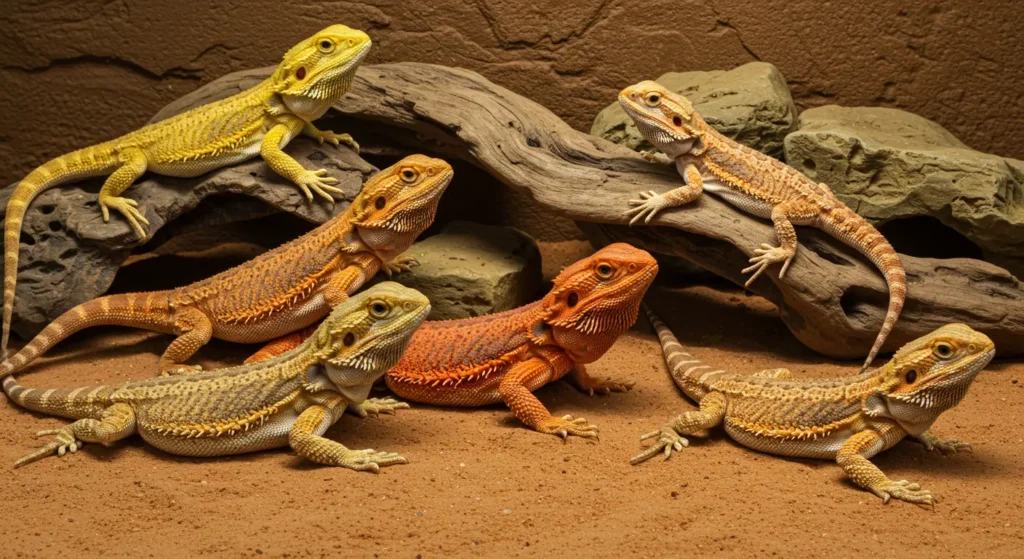
How Bearded Dragon Morphs Affect Appearance and Genetics
Bearded dragon morphs are more than just aesthetic variations—they’re rooted in genetics, influencing everything from color intensity to scale texture and pattern formation. Each morph is a result of specific genetic combinations passed down through selective breeding, allowing breeders to enhance or isolate certain visual traits over generations.
For instance, color morphs can range from bright Citrus yellow and deep Blood Red to the ghostly tones of the Zero morph. These vibrant hues stem from genetic mutations that affect pigmentation. Similarly, scale texture is genetically influenced—Leatherback dragons have smoother scales that intensify their coloration, while Silkbacks have no scales at all, resulting in a completely smooth, soft body.
Patterns also vary widely. Dunner morphs, for example, display irregular, chaotic scale arrangements and spot patterns that differ from the symmetrical designs seen in standard dragons.
Understanding how genetics impacts these traits helps enthusiasts not only appreciate the beauty of reptile morphs, but also prepare for the care needs of certain types. Some morphs may require special attention due to their unique skin or sensitivity to light, making knowledge of their genetic background essential for proper husbandry.
Natural vs Designer Bearded Dragon Morphs
All domesticated bearded dragon morphs trace their origins back to the Pogona vitticeps, the central bearded dragon species native to arid regions of Australia. In the wild, these dragons exhibit natural colorations—typically sandy browns and muted oranges—which help them blend into desert environments. These are referred to as natural morphs, and they represent the foundational genetics of the species.
In contrast, designer morphs are the result of decades of selective breeding within the global reptile trade. Passionate breeders have carefully paired dragons to enhance specific visual traits—such as brighter colors, smoother scales, or unique patterns—creating visually striking varieties that don’t occur naturally. Examples include the patternless Zero, the scale-less Silkback, and the vividly colored Red and Citrus morphs.
While natural morphs tend to be hardier and more adaptable, designer morphs may require special care, especially those with unique skin or genetic sensitivities. The distinction between these morphs is important for both ethical breeding practices and for pet owners seeking a morph that matches their aesthetic preferences and care abilities.
Key Traits That Define Bearded Dragon Morphs
When it comes to Bearded Dragon Morphs, the magic is in the details. Each morph is defined by specific traits like color, pattern, scale texture, and body shape—all of which combine to create a dragon’s unique look and appeal.
Color Variations in Bearded Dragon Morphs: Citrus, Red, White & More
One of the most captivating aspects of bearded dragon morphs is the stunning range of color variations available. While wild dragons display muted earth tones, selective breeding has introduced a palette of vibrant hues that make each morph truly unique.
The Citrus morph is known for its bright yellow and lime-green tones, often accented with orange or gold. These dragons are visually striking and often sought after for their tropical, almost glowing appearance. They’re ideal for owners who want a lively and bold pet to showcase.
On the opposite end of the spectrum is the Zero morph, which lacks all color and pattern. These dragons are a clean, snowy white or pale silver, offering a minimalist and ethereal look. They’re among the rarest and most elegant morphs available.
Another fascinating white morph is the Witblits, which—while similar to the Zero—retains subtle coloration but no pattern. This results in a soft, foggy appearance that stands out without being overly bright.
Each of these color-based morphs showcases how genetics can produce extraordinary beauty, turning the common bearded dragon into a living work of art.
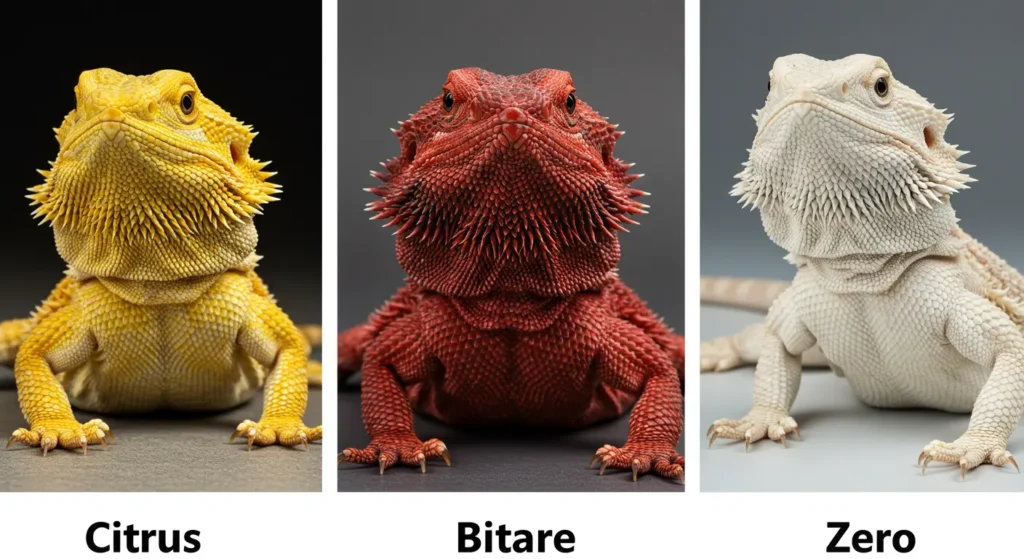
✅ Textures That Make a Difference: Scales & Skin
When it comes to bearded dragon morphs, scale texture is just as eye-catching as color. The texture of a dragon’s scales not only influences its appearance but can also impact its care needs. There are three main scale types: Standard, Leatherback, and Silkback.
The Standard morph is the most common, featuring rough, spiky scales and a classic rugged look. These dragons are hardy and require minimal specialized care.
The Leatherback morph has significantly smoother scales due to a genetic variation that reduces scale thickness. This smoother texture enhances the dragon’s color intensity, making oranges, reds, and yellows appear more vivid. Leatherbacks are highly sought after for their enhanced beauty and unique feel.
At the far end of the spectrum is the Silkback morph, a dragon with no scales at all. These dragons have a soft, delicate skin that gives them a glossy appearance, almost like silk. However, Silkbacks require special care, as their lack of protective scales makes them more sensitive to light, dehydration, and abrasions.
Understanding scale textures helps owners choose a morph not just for looks—but for the lifestyle and care they’re ready to provide.
Understanding the Genetics Behind Each Type
Beyond color and texture, many bearded dragon morphs are classified by specific genetic traits that influence both appearance and breeding. Among the most recognized genetic morphs are Hypo, Translucent, and Dunner—each with its own distinct look and inheritance pattern.
The Hypo morph, short for hypomelanistic, carries a recessive gene that reduces dark pigmentation. Visually, these dragons appear lighter in color and are easily recognized by their clear or white nails. Hypo dragons often display pastel tones, giving them a soft, almost glowing look.
Translucent morphs have a semi-transparent quality due to a genetic mutation affecting their skin. Hatchlings often show a blue-tinted belly and darker, glassy eyes. While the blue fades with age, the unique skin clarity remains. This trait is also recessive and often combined with other morphs for dramatic effects.
The Dunner morph is a dominant genetic trait that alters scale pattern and direction. Dunner dragons have irregular scale formations, rounder toes, and a chaotic, spotty body pattern—making them instantly recognizable.
Understanding these genetic morphs is essential for responsible breeding and for choosing a dragon that suits your visual preferences and care experience.
Top 10 Most Stunning Bearded Dragon Morphs
From glowing yellows to icy whites, these bearded dragon morphs are the most eye-catching and unique varieties bred today. Whether you’re looking for bold color, rare patterns, or unusual textures, this list showcases the top 10 dragons that truly stand out in the reptile world.
1. Citrus Morph
- Description: Known for their vibrant yellow to orange coloring with hints of lime green.
- Estimated Price: $150–$300
- Rarity: Common among designer morphs; beginner-friendly.
- Alt Text Suggestion: “Citrus bearded dragon morph with bright yellow and orange scales – bearded dragon types with pictures”
2. Zero Morph
- Description: Completely patternless and white or pale grey in color, resembling a ghost-like dragon.
- Estimated Price: $300–$700
- Rarity: Rare and highly desired for its clean, minimalist look.
- Alt Text Suggestion: “Zero bearded dragon morph with patternless white body – morph chart reference”
3. Hypo Morph
- Description: Displays lighter pigmentation and clear or white nails. Often combines with other morphs for a pastel effect.
- Estimated Price: $200–$400
- Rarity: Moderately common but visually impressive.
- Alt Text Suggestion: “Hypo bearded dragon with pastel coloration and clear nails – bearded dragon morphs explained”
4. Translucent Morph
- Description: Characterized by a semi-transparent belly and bluish tint, especially visible in hatchlings.
- Estimated Price: $250–$500
- Rarity: Fairly common but beautiful when combined with other morphs.
- Alt Text Suggestion: “Translucent bearded dragon showing blue belly tint – reptile morphs visual guide”
5. Red Morph
- Description: Deep crimson and burgundy hues make this one of the most dramatic morphs.
- Estimated Price: $250–$600
- Rarity: Varies; high-quality reds are prized and bred selectively.
- Alt Text Suggestion: “Red bearded dragon morph with intense crimson coloring – bearded dragon color variations”
6. Dunner Morph
- Description: Features chaotic scale direction, rounder toes, and unusual spotting. Easily recognized.
- Estimated Price: $200–$500
- Rarity: Unique and popular among collectors.
- Alt Text Suggestion: “Dunner bearded dragon morph with irregular scale patterns – bearded dragon identification chart”
7. Leatherback Morph
- Description: Has smoother, thinner scales, which enhances brightness and sharpens color.
- Estimated Price: $150–$350
- Rarity: Common and highly favored for its texture.
- Alt Text Suggestion: “Leatherback bearded dragon with smooth scales – morph texture comparison image”
8. Silkback Morph
- Description: Completely scaleless, resulting in a silky, shiny appearance. Requires careful handling and hydration.
- Estimated Price: $300–$800
- Rarity: Rare and for experienced owners only.
- Alt Text Suggestion: “Silkback bearded dragon with smooth, scaleless skin – special care morph”
9. Witblits Morph
- Description: Lacks pattern and has a very pale, creamy color; often confused with Zeros.
- Estimated Price: $400–$900
- Rarity: Very rare and often sought after by breeders.
- Alt Text Suggestion: “Witblits bearded dragon with soft pale coloring – rare morph identification photo”
10. Snow Morph
- Description: Features a cool blend of grey, white, and light hues that give a wintery appearance.
- Estimated Price: $250–$600
- Rarity: Moderately rare; loved for its soft tones.
- Alt Text Suggestion: “Snow bearded dragon morph with icy white and grey scales – bearded dragon morph chart”
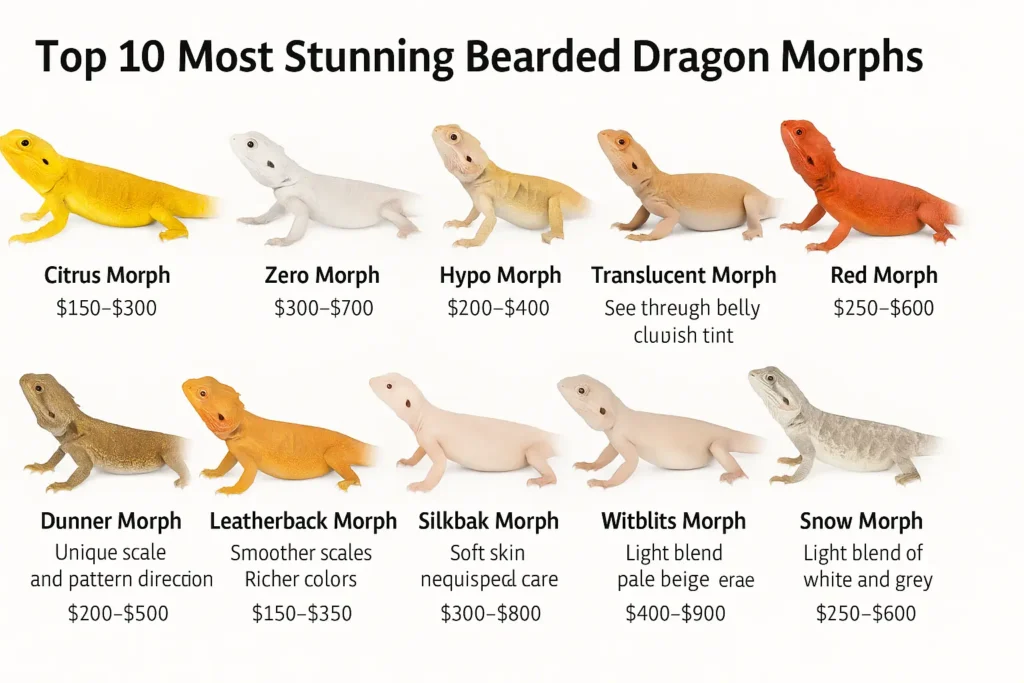
How to Identify Your Bearded Dragon’s Morph
Identifying your bearded dragon’s morph can be both exciting and a little tricky. By paying close attention to features like color, scale type, body structure, and pattern, you can start to narrow down which Bearded Dragon Morph your pet belongs to.
Step-by-Step Visual Guide
With so many bearded dragon morphs available today, it can be challenging to determine exactly which type your dragon belongs to—especially when certain traits overlap. That’s why using a clear, step-by-step visual identification process is essential, particularly for new owners or anyone buying from a breeder.
1. Observe the Base Color
Begin by looking at your dragon’s dominant body color. Is it a bright yellow or orange? That could indicate a Citrus morph. Deep red tones may point to a Red morph, while very pale or completely white dragons are often Zero or Witblits morphs.
2. Analyze the Pattern (or Lack of It)
Examine the body and tail for patterns. A patternless dragon could be either a Zero or Witblits—both are known for their clean, unmarked appearance. However, Witblits typically have a soft beige or grey tone, while Zeros are stark white or silver. If the pattern is chaotic and irregular, it may suggest a Dunner morph.
3. Examine Scale Texture
Touch the back gently to feel the texture. If it’s rough and spiky, your dragon likely has Standard scales. A smoother texture points to a Leatherback, while completely scaleless skin means you’re dealing with a Silkback, which requires extra care due to its sensitivity.
4. Check the Nails and Eyes
Clear or white nails are a signature feature of the Hypo morph, which displays less melanin and lighter overall coloring. If the eyes are unusually dark or glassy and the belly shows a bluish, translucent quality—especially in hatchlings—it could be a Translucent morph.
5. Look for Genetic Combinations
Many bearded dragons carry multiple morph traits. For instance, you might come across a Translucent Hypo Leatherback—a dragon with stacked genetics that influence various physical traits. When lineage documentation isn’t available, combining these visual markers can help narrow down the morph identity.
6. Use Visual References for Accurate Identification
To confirm your observations, compare your dragon with high-quality reference photos from experienced breeders or reptile communities. Online forums, breeder websites, and social media groups are excellent places to match your dragon’s traits with others.
As your site grows, consider adding your own morph gallery or printable guide to help readers easily identify their dragon’s type.
Bearded Dragon Morph Comparison Chart
| Morph Name | Color | Pattern | Scale Texture | Nail Color | Rarity | Estimated Price |
|---|---|---|---|---|---|---|
| Citrus | Bright yellow/orange | Some pattern | Standard/Leatherback | Normal or clear | Common | $150–$300 |
| Zero | White or pale silver | Patternless | Any | Normal | Rare | $300–$700 |
| Hypo | Pale or pastel tones | Varies | Any | Clear/White | Moderate | $200–$400 |
| Translucent | Blueish tint (esp. in belly) | Varies | Any | Normal | Moderate | $250–$500 |
| Red | Crimson, red, burgundy | Some pattern | Standard/Leatherback | Normal | Selective | $250–$600 |
| Dunner | Varies | Irregular/spotted | Any | Normal | Unique | $200–$500 |
| Leatherback | Enhances morph colors | Varies | Smooth | Normal | Popular | $150–$350 |
| Silkback | Depends on morph | Varies | No scales | Normal | Rare | $300–$800 |
| Witblits | Pale beige/grey | Patternless | Any | Normal | Very Rare | $400–$900 |
| Snow | White with light grey tones | Some pattern | Standard/Leatherback | Normal | Moderate | $250–$600 |
Ask Your Breeder or Use a Bearded Dragon Morph Chart
Now that you’ve seen the bearded dragon morph comparison chart, you probably have a clearer idea of where your dragon fits based on its color, pattern, and scale texture. But if you’re still uncertain—especially with dragons that show blended or subtle features—it’s best to ask the breeder directly.
Experienced reptile breeders often keep detailed genetic records and can tell you exactly which genetic traits your dragon carries, even if they’re not all visible. For example, a young dragon may look like a standard morph but actually carry hypo or translucent genes that become more noticeable with age or when bred.
If you didn’t get your dragon from a breeder—like in the case of pet stores or rescues—the chart you reviewed above can still serve as a valuable visual reference. But whenever possible, combining visual clues with genetic background will give you the most accurate understanding of your bearded dragon’s morph.
Common Misidentifications of Bearded Dragon Morphs and Mixed Traits
Identifying bearded dragon morphs can be tricky, especially when dealing with hybrids or dragons that display blended traits. Many morphs share similar features—like pale coloration, smooth scales, or reduced patterns—making it easy to confuse one type with another.
For example, a Witblits may be mistaken for a Zero, since both are patternless and light-colored. However, Witblits tend to have a subtle beige or grey tone, while Zeros are often pure white or silver. Likewise, a Leatherback might be confused with a Silkback, especially in juveniles where scale texture hasn’t fully developed. The key difference? Silkbacks have no scales at all and require very specific care.
Things get even more complex with combo morphs, where a single dragon inherits multiple genetic traits—such as being Hypo, Translucent, and Leatherback all at once. These dragons may not fit neatly into a single category, and their appearance may shift slightly as they grow.
Understanding that morphs can overlap or be misidentified helps avoid confusion, especially when buying, breeding, or caring for a bearded dragon. When in doubt, consult both a breeder and a visual guide to confirm.
Choosing the Right Bearded Dragon Morph for Your Lifestyle
Not all Bearded Dragon Morphs are created equal when it comes to care, temperament, and appearance. Choosing the right morph means finding one that fits your experience level, daily routine, and personal taste—whether you’re a first-time owner or a seasoned reptile enthusiast.
Rare vs. Common: What Affects the Price?
When choosing a bearded dragon, pricing and availability often depend on how rare the morph is. Common morphs, such as Citrus, Hypo, or Leatherback, are widely available through breeders and pet stores. These dragons are typically more affordable, with prices ranging from $150 to $350, depending on quality and age.
In contrast, rare morphs like Zero, Witblits, and Silkback are considered premium or exotic due to their unique genetic traits and visual appeal. These can cost anywhere from $400 to $900 or more, especially if the dragon carries multiple rare traits or comes from a show-quality bloodline.
Availability also plays a role—rare morphs are often limited in supply and may require reservations through specialty breeders. On the other hand, affordable morphs are more accessible and ideal for first-time owners.
Understanding the difference between affordable vs expensive morphs can help you make a better decision based on your budget, experience level, and whether you’re looking for a pet or a future breeder-quality dragon.
Care Challenges for Delicate Morphs
While most bearded dragons share similar basic care needs, some morph types require specialized attention—particularly Silkbacks and Translucents. These dragons have unique genetic traits that affect their skin, sensitivity, and overall health.
Silkbacks, for instance, lack scales entirely. While visually stunning, this trait comes with challenges. Their smooth, delicate skin is more prone to drying out, injury, and UV sensitivity. Silkbacks must be misted regularly, provided with soft, non-abrasive substrates, and monitored closely for hydration and skin health. Excessive direct heat or rough handling can easily damage their skin.
Translucent morphs, especially as juveniles, have semi-transparent skin and may exhibit more sensitivity to light and heat. Their eyes are often darker, making them more prone to stress in overly bright environments. It’s important to provide proper UVB lighting while allowing shaded areas in the enclosure.
Other morphs—such as Leatherbacks or Standard types—require only typical husbandry. But if you’re caring for a dragon with unique genetics, it’s crucial to adapt their environment and routine accordingly to keep them healthy, happy, and thriving.
Best Bearded Dragon Morphs for Beginners vs Collectors
Choosing the right bearded dragon morph depends not only on aesthetics but also on experience level and care expectations. For beginners, it’s best to start with hardy, low-maintenance morphs that are widely available and easier to care for. Morphs like Standard, Citrus, Leatherback, and Hypo are excellent choices. They’re affordable, resilient, and don’t require special treatment—making them ideal for first-time reptile owners entering the pet trade.
On the other hand, collectors and experienced reptile enthusiasts often seek out rare or designer bearded dragons. These include morphs like Zero, Witblits, Silkback, and Translucent—which are prized for their unique appearance and genetic complexity. However, these dragons often require specialized care, limited handling, and higher investment.
Collectors also value dragons with stacked genetics (e.g., a Translucent Hypo Leatherback) or dragons from exclusive bloodlines. These morphs are not only visually striking but also play a role in selective breeding programs within the advanced reptile breeding community.
Knowing whether you’re seeking a pet or a showpiece will help you choose the morph that best fits your lifestyle and goals.
Conclusion: Which Bearded Dragon Morph Stole Your Heart?
From the vibrant hues of the Citrus morph to the glassy, scale-free elegance of the Silkback, Bearded Dragon Morphs offer a breathtaking variety of colors, textures, and personalities. Each morph is a living testament to the beauty of genetics and the unique charm that makes these reptiles so beloved by keepers around the world.
Whether you’re new to reptile care and seeking a hardy, beginner-friendly morph, or a passionate enthusiast hunting for that one rare dragon to complete your collection, Bearded Dragon Morphs deliver both aesthetic wonder and a rewarding ownership experience.
So—which morph speaks to you the most? Have you welcomed one of these stunning dragons into your home, or are you still exploring the possibilities? Share your favorite morph in the comments below—we’d love to hear about your dragon journey!
And if you’re ready to dive deeper, explore our expert guides on bearded dragon morph identification, care tips, enclosure ideas, and much more. For daily inspiration and amazing reptile content, don’t forget to follow us on Instagram and Pinterest!

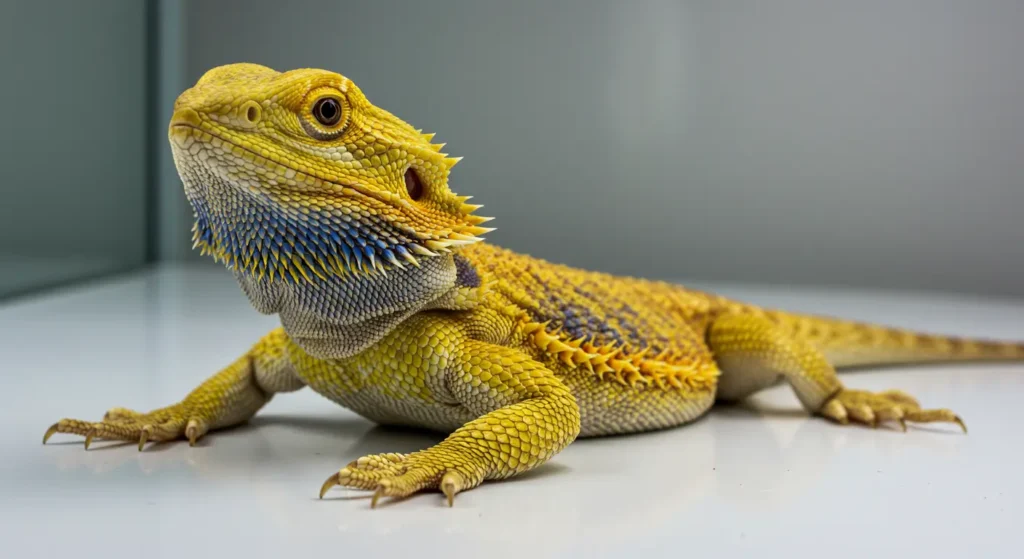
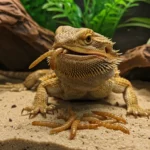
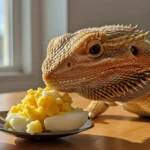
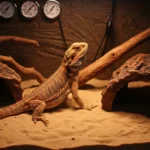
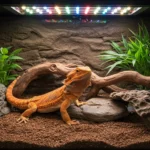
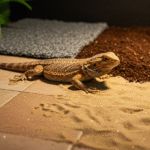
1 thought on “Top 10 Most Stunning Bearded Dragon Morphs of All Time”